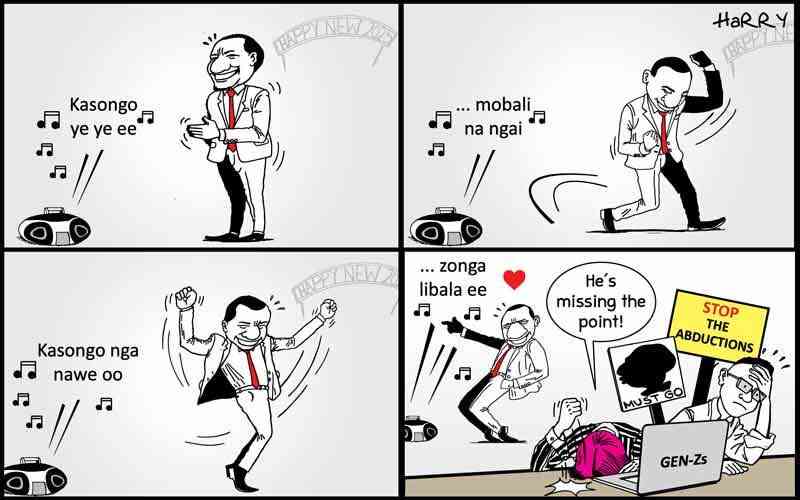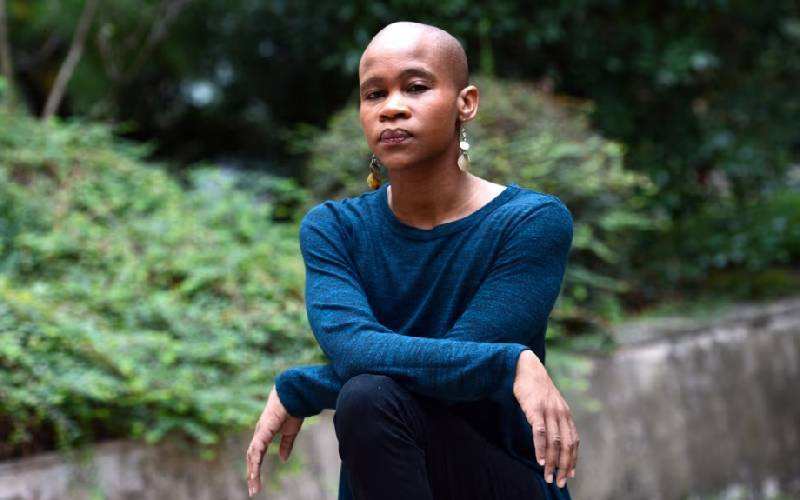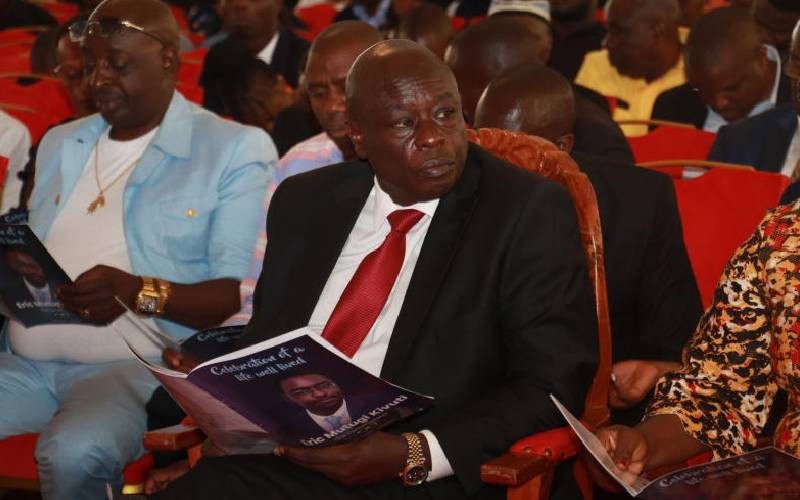By Matilda Nzioki
Watching the hundreds of young people lined up outside in the chill of weekend mornings at the start of this April (for the KTN Can U Dance? show where Pulse editor CEO is a judge), I couldn’t help but think back to high school. Back when I was a Form One student or a ‘mono’ or even a ‘rabble’ as they are popularly referred to in high school. A certain trendsetter in school in Form Three took to the stage, throwing out her wrist with her fingers pointed straight and her head simultaneously on one side and then on the other as she moved towards the center of the dais, to ragga drum beats. At the centre, she faced the crowd, and  |
Gully Creeper |
repeated the move, this time lifting a leg on the side the arm and the head were facing. Just as the crowd was getting excited, she pulled a climax by turning round in the unchanged rhythm. The masses stood up in bursts of cheer, blasts of clapping renting the air. To some, it was a new and hence very interesting thing to watch. For others, few indeed, who undoubtedly frequented the jam session; it could be depicted in their joy that a new and unique new dance style was in the offing. What she was performing was a dance we all later came to know as the Kuku dance.
High school dance
That was 2001. After spotting a continuous change in trend of this contemporary freestyle dancing, I decided to go back to where the all high school dance styles originate. Florida 2000 aka F2.
Last Sunday afternoon, I checked into the jam session at F2 and the sight was entertaining. All heads bent and backs moving in a slithery style rhythmically. It appeared that only the bouncers, waiters and I were standing. Then it hit me — yet another move was being born! I later felt a little disappointed to learn that it is a move that originates from Jamaica, known as Gully Creeper, which is also the title of Jamaican ragga musician Elephant Man’s song, and the dance shows in the video of the same name.
Since the Kuku dance era, just like all other countires (other than Nordic Europe where they just jump up and down to techno), Kenya seems to have been creating out its own dance styles, one after another. Those who frequent the jam session say it takes at least four months before a new style catches on. "Depending on how good a style is, on average, a dance move will be on for about three months, but if it’s not all that good, people quickly forget about it," said Gibson of LAPD dancers.
Formal and recognised
Another reveller Golicha Abdi supports this, saying, "Around three months is enough, provided the style is not confined to a certain genre of music that will fade away." The craze has earned many a good spot in the entertainment industry, probably due to the amusement many find in the moves. In 2005 the Unbeatables duo competed in the dance show Dance-o-Mania with style, Mosquito, emerged first runners-up after weeks of grueling competition, beating more formal and recognised dance styles. Alkaeda, the official Redsan Dancers, are also a product of these contemporary moves, and can boast of having danced for Collo, Risasi, DnG and Megatone in the past. In the play Let Kenyans be Kenyans by Heartstrings, it is well depicted as a culture, and the dances are analysed step by step, as they followed each other.
I got various answers as to whence the styles come, to a point of being popular. "Maboiz wa ghetto ndio hucam kutoa hizo styles hapa," explained 17-year-old Macky Achie and Caroline Mutheu explained. Gibson from LAPD added that whenever one has a new style, they wait for Showtime, which comes at 5.30pm, and showcase their move. If it hits, that’s it! I met one Marvin Onyango, who had plans to launch a new style during Showtime, and his friends had already named it Virus. Golicha said that most of the styles come out after an old one is ‘pimped’.
After Kuku, there came Slide, sometime in 2002, which was followed by Helicopter which involved lifting and shaking of the shoulders, perhaps best for stiff dancers. It also went by the names like Karanga Chapo and Shuba Shuba. This evokes the issue, who exactly names the dance moves? This can be one person or a group of people that introduce a move name it or even the revelers themselves, using idioms that describe the style. According to another fan going by the name
Bouncing forward
Saddam, many names are tossed around and the most popular one rules the roost. "The jam session DJs and emcees also label the dance moves," said Macky. The Helicopter was soon followed by the Mosquito and after awhile, Chinese, in which one shakes gradually as they move around. Kangaroo or Mashoka or KarekÈ as some prefer to call it, follows later. Just like many others, it also has different phases and themes. As one dances they can be seen either moving back and forth, or bouncing forward while sticking out the behind or even caressing themselves. Limbo Dancers, also enthusiasts of the jam session, note that the Cripple dance is the latest. Most of these styles, seven in total, seem to blend well with ragga, reggae and local music, especially Bongo Flava.
The interviewees all agree that once a deadly style is invented, everyone struggles to learn the ropes, so as to keep abreast with the drift. And the more unique a style, the better, as the few who can hack it and hack it well gain fame amongst their peers. This causes the bearing of a new one, every now and then. "When those in boarding schools come home for the holidays, they find a new move, and work hard to catch up," noted Golicha. They all agree that a reigning style is the only one which will be danced during the Jam, and everyone would rather be caught seated than dancing an old version, and add that they mostly only apply at the joint, but end up spreading outside — when the ace dancers go flossing to other places, including churches.
The dance styler are evidence of the creativity we have locally, but I sensed that the blossoming culture is threatened by the usual suspects, the West – not America, though, but the champion dancers, Jamaica! The revellers kept shifting from the latest local moves to some Jamaican ones. They are mostly borrowed from music videos, and many admit to struggling to learn them.
Stay informed. Subscribe to our newsletter
Usain Bolt’s style
The common ones include Gully Creeper and Nuh Linga, both in Elephant Man’s music videos. Gully Creeper, was popularised across the world by Jamaican World record breaking sprinter Usain Bolt when he performed it after winning the 200m during the Beijing Olympics last year and is extremely popular.
Others that clearly appeal to the youngsters are Willy Bounce which Sean Paul is famed for, and also Daggering and Take for Yuh self, also seen in Mr. Vegas’ videos, which go by the same titles. Gospel musicians MOG have dubbed the dance Take for Yuh self in their latest released video of the hit Let Him Go. The Daggering style is popular among Jamaican youth and it features pelvic grinding simulating sex. According to a Jamaican newspaper Ragga videos depicting the style have been banned in the island since February this year. Locally we appalud the young innovaters that keep the dancefloor interesting.
And where’s their new perch? Just watch KTN’s Can U Dance? tomorrow and, for sure, you will see duos move and groove like never before.
 The Standard Group Plc is a
multi-media organization with investments in media platforms spanning newspaper
print operations, television, radio broadcasting, digital and online services. The
Standard Group is recognized as a leading multi-media house in Kenya with a key
influence in matters of national and international interest.
The Standard Group Plc is a
multi-media organization with investments in media platforms spanning newspaper
print operations, television, radio broadcasting, digital and online services. The
Standard Group is recognized as a leading multi-media house in Kenya with a key
influence in matters of national and international interest.
 The Standard Group Plc is a
multi-media organization with investments in media platforms spanning newspaper
print operations, television, radio broadcasting, digital and online services. The
Standard Group is recognized as a leading multi-media house in Kenya with a key
influence in matters of national and international interest.
The Standard Group Plc is a
multi-media organization with investments in media platforms spanning newspaper
print operations, television, radio broadcasting, digital and online services. The
Standard Group is recognized as a leading multi-media house in Kenya with a key
influence in matters of national and international interest.









